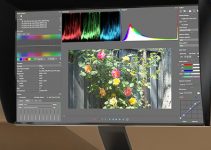As with any other aspect of the creative process, being talented and passionate is unfortunately far from enough to become a true professional and be remembered as a visionary artist. These personal qualities are only the half part of the equation. Even more important is the patience and persistence requisite in learning the craft and paying attention to even the smallest details of the process.
In terms of editing, it means endless hours spent in the editing suite, taking risks, breaking the rules, being bold and innovative, and standing up for your personal creative decisions. At last but not least, utilising some advanced editing techniques can also significantly improve your work and skill set making you a better storyteller in the end.
Here is a simple, yet really powerful technique that will help you to enhance your editing and add more production value to your projects.
Creating split edits is a great way to capture and hold the attention of your audience, especially when you are dealing with a dialogue or action sequences in your production, thus making your editing points as seamless as possible. In essence, split editing occurs when your audio and video change at a different point in time. Split edits are used extensively in dramatic film and video, where the audience is able to see one thing while hearing something different, yet everything on the edit stays in sync.
As it happens in the given example above it’s natural to cut to the next person in a dialogue scene at the moment when he/she starts talking. However, if we intentionally change the edit, and we cut it, so the audience hears the voice of the given person before we actually see him in the frame then the edit will be a lot more engaging and entertaining to watch.
This can be easily done, no matter of the editing platform you are using. In Premiere Pro CC you need to choose the Rolling Edit Tool from the tool panel. Then by pressing the Option Key on Mac (or Alt Key on Windows), you should click on either video or audio track, thus changing the editing point on the given track that you want to move forward or backward in the edit.
Generally, the rolling edit tool allows you to change the place of a transition without changing the length of the overall production. Alternatively, you can achieve almost the same effect by using the Ripple Tool as shown in the above example.
In the following video tutorial produced by Larry Jordan, you can see how to create split edits in FCP-X
Using Split Edits is a really natural way to engage your audience subconsciously, thus making the viewers even more engaged and immersed in the story. Using this technique on a regular basis will definitely improve your editing by livening up your scenes no matter of the type of your production.
[ source: macProVideoDotCom, Larry Jordan]
Disclaimer: As an Amazon Associate partner and participant in B&H and Adorama Affiliate programmes, we earn a small comission from each purchase made through the affiliate links listed above at no additional cost to you.
Claim your copy of DAVINCI RESOLVE - SIMPLIFIED COURSE with 50% off! Get Instant Access!






A very nice article. I’m glad that you also post usefully learning techniques besides the camera and gear related stuff.
Thanks! Glad we can help! Cheers,